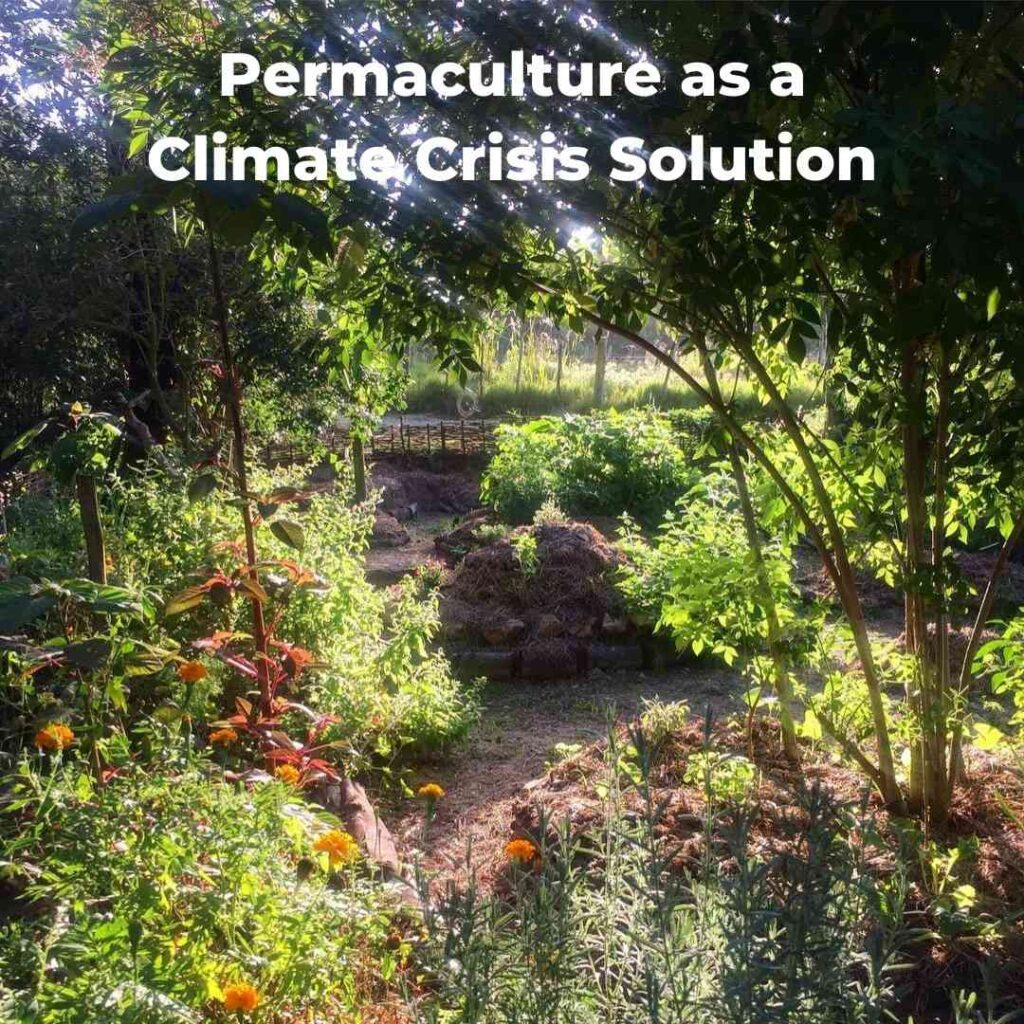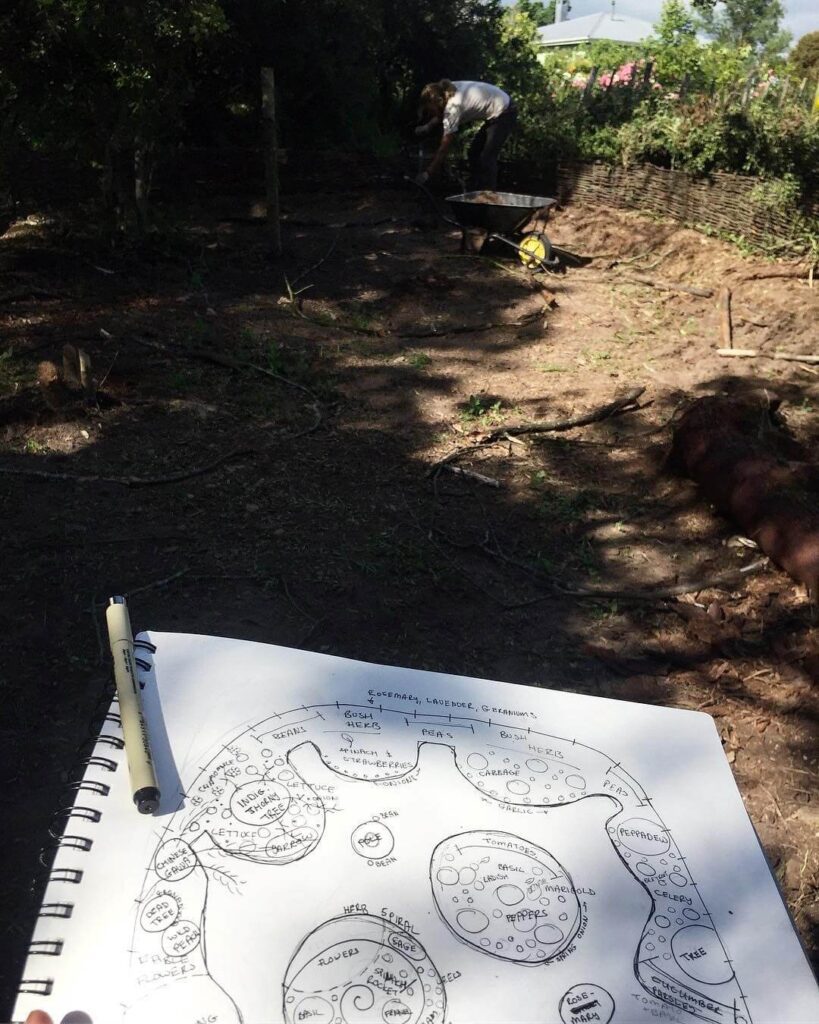
Permaculture as a Climate Crisis Solution
Permaculture – an amalgamation of the words ‘permanent’ and ‘agriculture’ coined by scientist Bill Mollison and his student, David Holmgren – is a system that offers us the tools to design our way out of numerous crises facing humanity.
Permaculture has become a widely used and extremely misunderstood term. Before one can harness the ancient wisdom behind the ethics and principles of Permaculture, one must truly understand what it is – at its essence.
Permaculture has become a widely used and extremely misunderstood term. Before one can harness the ancient wisdom behind the ethics and principles of Permaculture, one must truly understand what it is – at its essence.

In order to understand what it is, it may be helpful to acknowledge what it is not. Permaculture is not gardening, nor is it living sustainably; it is not a cult or a religion, nor is it a hard set of rules. One cannot say that their vegetable patch is ‘a Permaculture’ – it is not a noun. It is not an ego trip for one to boast that they know better than another and it is no longer common sense in the Western world. Lastly, Permaculture is not a system created by old, white men. Permaculture is old knowledge that was formulated and has been used by indigenous people for millennia – Mollison and Holmgren simply structured this knowledge into an accessible and usable format for the modern human, and they have stated so often.
As a design system, Permaculture is about action – it is a mindset and therefore, one could say that they live their life or have designed their home and garden or village using the teachings of Permaculture. It is the intricate connections between the elements that make up the designs of entire human settlements, it is systems thinking. It can be highly complex, if one dives deep, or extremely simple. A garden fits into the Permaculture system as it fulfills the human need to eat – it creates food security. That being said, one could design their life according to the principles without growing a single plant – Social Permaculture.Permaculture asks us to live without excess (to reduce our waste and transform it into a resource), to view ourselves as connected to all things, and to cultivate a solution-based mindset. Using the tools that the principles of Permaculture provide, it is possible to shape our individual lives and to redesign the destructive systems at play to morph the current apocalyptic narrative into something regenerative.Through the lens of Permaculture, one will realise that sustainability is not enough – regeneration is key – and manicured lawns are not beautiful, but rather wasteful and ridiculous. The lens magnifies what corporations gloss over and shows us that the current norm of destructive agriculture is catapulting humanity toward the precipice of environmental catastrophe. Permaculture shows us that the destruction of the natural world is a tragedy disguised as ‘progress’; it shows us that the creepy crawly creatures we so often fear are, in fact, an important part of biodiversity.
Many simplified definitions of Permaculture can be found: Bill Mollison has described it as “a persistent system that supports human existence”, and as “a philosophy of working with, rather than against, nature.” Marit Parker describes it as something that “joins the dots between different areas of our lives, different interests and different issues that affect us,” while Heather Jo Flores describes it as “community, human and non-human, interconnected.”
As a design system, Permaculture is about action – it is a mindset and therefore, one could say that they live their life or have designed their home and garden or village using the teachings of Permaculture. It is the intricate connections between the elements that make up the designs of entire human settlements, it is systems thinking. It can be highly complex, if one dives deep, or extremely simple. A garden fits into the Permaculture system as it fulfills the human need to eat – it creates food security. That being said, one could design their life according to the principles without growing a single plant – Social Permaculture.Permaculture asks us to live without excess (to reduce our waste and transform it into a resource), to view ourselves as connected to all things, and to cultivate a solution-based mindset. Using the tools that the principles of Permaculture provide, it is possible to shape our individual lives and to redesign the destructive systems at play to morph the current apocalyptic narrative into something regenerative.Through the lens of Permaculture, one will realise that sustainability is not enough – regeneration is key – and manicured lawns are not beautiful, but rather wasteful and ridiculous. The lens magnifies what corporations gloss over and shows us that the current norm of destructive agriculture is catapulting humanity toward the precipice of environmental catastrophe. Permaculture shows us that the destruction of the natural world is a tragedy disguised as ‘progress’; it shows us that the creepy crawly creatures we so often fear are, in fact, an important part of biodiversity.
Many simplified definitions of Permaculture can be found: Bill Mollison has described it as “a persistent system that supports human existence”, and as “a philosophy of working with, rather than against, nature.” Marit Parker describes it as something that “joins the dots between different areas of our lives, different interests and different issues that affect us,” while Heather Jo Flores describes it as “community, human and non-human, interconnected.”

Personally, I see Permaculture as a call to action, an empowering body of fascinating knowledge, and a workable set of solutions in a world of problems. I see it as accountability for our role as Earth custodians, enabling us to design our mindsets in favour of the natural world, so that the paradise of Earth may naturally regrow.
Resources:
Resources:
https://www.heathcote.org/PCIntro/2WhatIsPermaculture.htm
https://www.freepermaculture.com/
http://scott.london/interviews/mollison.html
https://www.freepermaculture.com/
http://scott.london/interviews/mollison.html
Written by: Kelly Steenhuisen
Tags :




